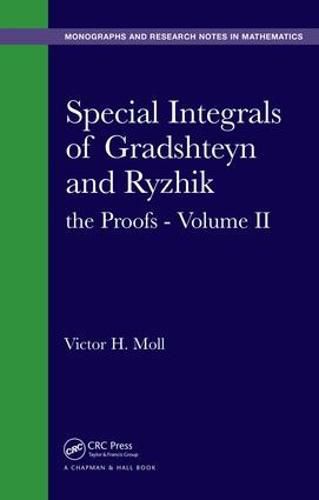Readings Newsletter
Become a Readings Member to make your shopping experience even easier.
Sign in or sign up for free!
You’re not far away from qualifying for FREE standard shipping within Australia
You’ve qualified for FREE standard shipping within Australia
The cart is loading…






A Guide to the Evaluation of Integrals
Special Integrals of Gradshetyn and Ryzhik: the Proofs provides self-contained proofs of a variety of entries in the frequently used table of integrals by I.S. Gradshteyn and I.M. Ryzhik. The book gives the most elementary arguments possible and uses Mathematica ® to verify the formulas. You will discover the beauty, patterns, and unexpected connections behind the formulas.
Volume II collects 14 papers from Revista Scientia covering elliptic integrals, the Riemann zeta function, the error function, hypergeometric and hyperbolic functions, Bessel-K functions, logarithms and rational functions, polylogarithm functions, the exponential integral, and Whittaker functions. Many entries have a variety of proofs that can be evaluated using a symbolic language or point to the development of a new algorithm.
$9.00 standard shipping within Australia
FREE standard shipping within Australia for orders over $100.00
Express & International shipping calculated at checkout
A Guide to the Evaluation of Integrals
Special Integrals of Gradshetyn and Ryzhik: the Proofs provides self-contained proofs of a variety of entries in the frequently used table of integrals by I.S. Gradshteyn and I.M. Ryzhik. The book gives the most elementary arguments possible and uses Mathematica ® to verify the formulas. You will discover the beauty, patterns, and unexpected connections behind the formulas.
Volume II collects 14 papers from Revista Scientia covering elliptic integrals, the Riemann zeta function, the error function, hypergeometric and hyperbolic functions, Bessel-K functions, logarithms and rational functions, polylogarithm functions, the exponential integral, and Whittaker functions. Many entries have a variety of proofs that can be evaluated using a symbolic language or point to the development of a new algorithm.